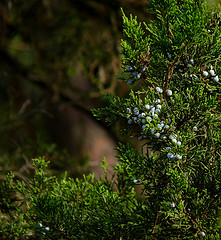Vermont Researchers Respond to Acid Rain Research as Part of the Scientific Method
Sep. 22nd 2014Numerous studies have been conducted to monitor potential recovery of forests following the implementation of the Clean Air Act and subsequent diminishment of acid rain. Scientists at the University of Vermont called into question some recent results published in the Proceedings of the National Academy of Sciences (PNAS). The original publication was by R. B. Thomas, S.E. Spal, K.R. Smith, and J.B. Nippert (2013), “Evidence of recovery of eastern red cedar (Juniperus virginiana) trees from sulfur pollution after the Clean Air Act.” Eastern redcedar (Juniperus virginiana) is a tree species with widespread distribution in the Eastern United States, including Vermont, and can live in a variety of soils with a large range in soil acidity (pH 4.7-7.8). Schaberg et al. questioned why the researchers studying recovery from acid rain chose to study a species that is not sensitive to acidic soils or has exhibited any known decline. Other species such as red spruce (Picea rubens) or sugar maple (Acer saccharum) who’s decline was associated with acid deposition may be better suited to studies of recovery from acid deposition. The research by Thomas et al. was questioned for some of the methods used in determining the impacts of acid deposition on trees. The study focused on sulfur, which is not mechanistically linked to acid deposition damage to trees, rather than calcium or aluminum, which are. Additionally, the study site was located on a limestone outcrop, which is well buffered against acid deposition, minimizing the impact of acid on the trees. Also, a limited sample size of only five trees were studied within the site, so that measurements of the nature and timing of growth declines and possible rebounds were not robust. The format of scientific journals allows letters questioning the work of authors of a publication, who can then provide a rebuttal. The authors of the original paper did present a rebuttal, responding to the questions posed by Schaberg et al. and clarifying their research. Thomas et al. reply that choosing to use eastern redcedar is an appropriate species to study because it is not the most acid-sensitive, nor the least acid-sensitive, supporting their statement that the Clean Air Act has had an impact on some tree growth and recovery. Some methods they used were isotopic, and can provide a picture of effects over time, including first the decline of growth with increased acid deposition followed by increased growth corresponding with the timing of deposition reductions resulting from enacted by the Clean Air Act. The sulfur isotope can be used to identify the sulfur source, and was then used to determine the response due to sulfur pollution, not relying on ionic impacts by hydrogen. The scientific process and further studies will need to continue to determine if red cedar or other species have recovered following the implementation of the Clean Air Act and on how large of a scale the recovery has progressed. Other researchers continue to study the long-lasting impacts of acid rain and if any recovery has occurred since the Clean Air Act.
 ecoNEWS VT
ecoNEWS VT